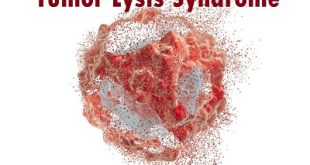What is Tumor lysis syndrome? Tumor lysis syndrome (TLS) is characterized by rapid and massive destruction of tumor cells, which is caused by tumour cell death resulting in a sudden release into the blood stream of intracellular products (nucleic acids, potassium and phosphate). This can result in clinical toxicities including …
Read More »Carcinoid Syndrome – Definition, Pathophysiology, and Outlook.
What is Carcinoid Syndrome? Carcinoid syndrome is a group of symptoms you might have with a type of cancer called carcinoid tumors. These tumors start in cells that make certain chemicals, and they release more of those chemicals into your bloodstream. The symptoms can be similar to those of other …
Read More »Fibroadenoma – Definition, Causes, Treatment and Prevention.
Definition Fibroadenoma is not cancerous. They range in size from smaller than a marble to as large as a golf ball. Most appear suddenly and stay the same size. Some shrink or continue to grow. They are affected by hormones and often change size over the menstrual cycle or during …
Read More »Testicular Cancer – Symptoms, Causes and Treatment.
Definition Testicular cancer is a disease in which malignant (cancer) cells form in the tissues of one or both testicles. It occurs in the testicles (testes), which are located inside the scrotum, a loose bag of skin underneath the penis. Testicular cancer Epidemiology Studies of testicular cancer in selected …
Read More »Uterine Fibroids – History, Causes, Treatment and Prevention.
Definition Uterine fibroid is the most common benign (not cancerous) tumor of a woman’s uterus (womb). Fibroids are tumors of the smooth muscle found in the wall of the uterus. They can develop within the uterine wall itself or attach to it. They may grow as a single tumor or …
Read More » Diseases Treatments Dictionary This is complete solution to read all diseases treatments Which covers Prevention, Causes, Symptoms, Medical Terms, Drugs, Prescription, Natural Remedies with cures and Treatments. Most of the common diseases were listed in names, split with categories.
Diseases Treatments Dictionary This is complete solution to read all diseases treatments Which covers Prevention, Causes, Symptoms, Medical Terms, Drugs, Prescription, Natural Remedies with cures and Treatments. Most of the common diseases were listed in names, split with categories.





